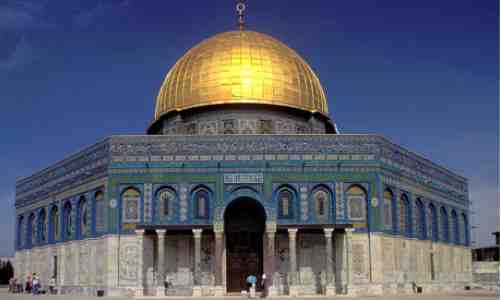For most people, the words Palestine or West Bank won’t shout holiday destination. But set aside stereotypes: Foreign Office bars on travelling in the West Bank were lifted several years ago, and visitors to Palestine will be met with a warm and enthusiastic welcome. This tiny area packs in more historical, religious and cultural heritage than perhaps anywhere else in the world, and its small size means it’s completely feasible to visit a good proportion of its sights in a fairly short trip. Several new community tourism and hiking or biking holiday operators also make experiencing Palestine’s stunning scenery and great food increasingly easy.
The vast majority of travellers to Palestine visit over Christmas, when Bethlehem sees thousands of visitors for Midnight Mass. Leaders of the various Christian denominations lead processions from Jerusalem, and Manger Square fills with boy scout bagpipe bands. For religious travellers Christmas and Easter will be major draws, but prices are lower and accommodation easier to find at other times of year.
Getting around the West Bank is pretty simple, on the informal but extensive shared taxi (or service taxi, pronounced “serveece”) network. The longest journey you’re likely to face is between the administrative capital, Ramallah (with its cosmopolitan restaurants and nightclubs and official arts centres), and the northern city of Jenin. That trip can take just an hour and a half if Israeli checkpoints en route are open. Foreign visitors are still rare enough that shared taxis are a great way to meet local people; many Palestinians speak at least some English and are very happy to practise on you – a conversation that often ends in an invitation for sweet Arabic tea or a set of helpful phone numbers.
Recent years have also seen new hotels, guesthouses, hostels and home-stay programmes opening across the West Bank. This makes it easier to stay in Palestine without being tied to the pilgrimage hotels of Ramallah and Bethlehem, and for visitors to make a real contribution to isolated rural economies.
Granted, tourism to Palestine still faces many challenges, not least the Israeli border authorities who control all routes into the West Bank and Gaza. For international travellers, crossing the checkpoints into the West Bank at Qalandia and Bethlehem is usually straightforward. Declaring your intention to visit the West Bank at Ben Gurion airport or the land crossing from Jordan will often, however, result in questioning which can last for hours. Travellers with stamps from countries such as Lebanon, Syria or Iran may well face long interrogations or a complete refusal from Israeli border controls. Gaza is another matter; the Foreign Office currently advises against all travel here, and visits require journalistic or diplomatic accreditation to go via Israel.
Sebastia
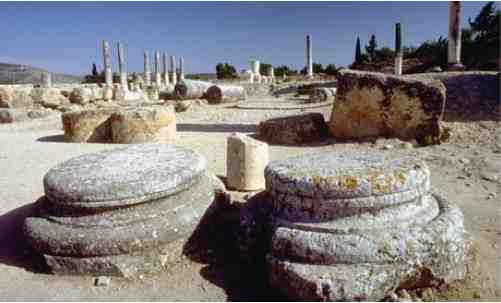
The impressive Hellenic watchtowers, ruined Samaritan palaces and crumbling Byzantine churches of Sebastia are a fairly well-known destination for whistle-stop Israeli tours. But a new community tourism project in the Palestinian village of Sebastia makes staying on in this picturesque region a delight. The elegant little Sebastia Guesthouse serves up breakfasts of fresh bread, olive oil, herbs and fruit sourced literally yards away; eat on a terrace with views over miles of olive groves or in the renovated rooms of Byzantine- and Mamluk-era homes. Young locals have been trained up as guides for hikes from the information centre to the Ottoman railway station or the ancient maqamat – Islamic shrines – that dot the surrounding hilltops. Both the information centre and guesthouse are located just on the edge of the village’s main square.
• Reach Sebastia by shared taxi from Nablus. Sebastia Guesthouse (+972 9 253 2545, tinyurl.com/sebastiastay) costs from £85 for a double room
Haram ash-Sharif, Jerusalem
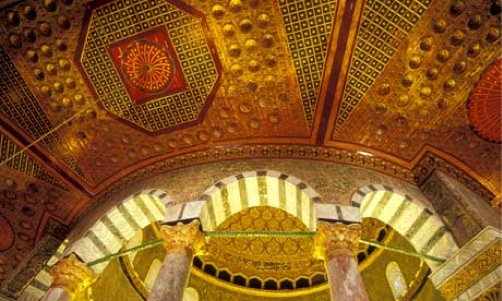
The great golden Dome of the Rock may be an internationally recognised symbol of Jerusalem, but actually getting into the “Noble Sanctuary”, Islam’s third holiest site, can be a bit of an enterprise. The entrance for non-Muslims is tucked away behind the security gates for the Western Wall Plaza. Get there early in the morning, and be prepared to queue, because it’s worth every second of the wait. As well as the soaring gold-and-blue Dome of the Rock (Qubbat as-Sakhra) and the sombre splendour of the Al-Aqsa Mosque, the sanctuary complex houses many other smaller, but equally beautiful, structures. Especially worth looking out for is the Mamluk-era Sabil (drinking fountain) of Qait Bey, with its elegant carved stone dome, one of the few of its kind outside Egypt.
• Official hours (though these are subject to change) are Sun to Thurs 7.30am–11am, 1.30pm–3pm. Usually closed for Islamic holidays, Jewish holidays, Fri/Sat (except Muslim worshippers), and whenever the Israeli authorities consider there to be a security risk. Visit early in your stay, so you can come back if it is shut
Deir Ghassaneh
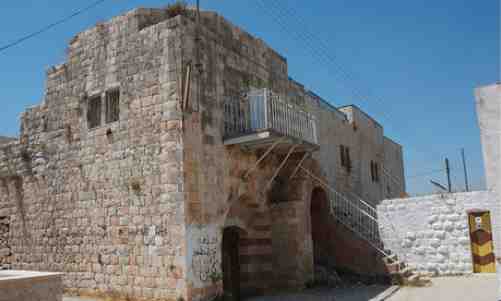
Readers of Mourid Barghouti’s I Saw Ramallah will be familiar with Deir Ghassaneh. His autobiographical account of growing up in this small village, north of Ramallah, evokes the brooding atmosphere of its old stone houses, grouped defensively around narrow passages and courtyards. Built for the most part in the 18th century, when the village was the base for one of the families who ruled over small parts of Ottoman Palestine, many of these homes still have wells for storing water, olive oil and grain to withstand sieges. Now, the local women’s association offers a way into the village, running a small museum of rural bits and pieces, where they also serve splendid banquets of local food and give afternoon lessons in authentic Palestinian cookery.
• Visit via service taxi or private car from Ramallah, or contact the women’s association via the Palestinian Association for Cultural Exchange (+972 2240 7611, pace.ps), traditional meals from £5-£10
Jenin’s Old City
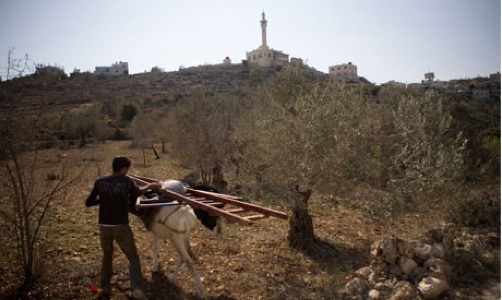
Being woken at 4.30am is rarely a plus. But heard from the Cinema Jenin guesthouse in the city centre, in a cool, clear dawn, the haunting musical waves of the azan, or call to prayer, roll along Jenin’s hills. It’s a moment of calm beauty in this bustling town, sadly better known for the Israeli army’s massive 2002 attack on the refugee camp. But in the ancient, dust-coloured Old City, staff at the Palestine Fair Trade Association’s Al-Dabbeh Street offices in a stone Ottoman home explain the difference their fair trade olive oil make to the lives of thousands of farmers. Or Umm Imad, whose journalist son was shot dead by an Israeli soldier in 2002, smiles as she shows off piles of meticulous embroidery for sale in the courtyard of the Women’s Cultural Society a few yards up the street. As well as making a living for local families, her society continues her son’s mission to keep Palestinian culture alive.
• Reach Jenin by shared taxi (1.5 hours) from Ramallah’s central bus station. Cinema Jenin Guesthouse (+972 4250 2455, cinemajenin.org) has doubles from £44
Hiking and biking
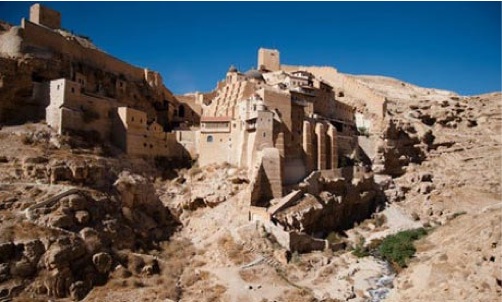
As Guardian Travel reported last year, organised walking and cycling tours are an increasingly accessible way to see the Palestinian countryside and meet local families in small towns and villages such as al-Fara’a and Aqraba, which are only just beginning to open up to international visitors. Bike Palestine’s itineraries span the lush hills of the northern West Bank, the eerie Judaean Desert in the south and historical cities such as Jericho and Bethlehem. The Abraham Path and Nativity Trail treks, inspired by the wanderings of the Prophet Abraham and Jesus Christ respectively, are hiking trails through the northern and central West Bank which are open to walkers of all faiths or none.
• A seven-day bike tour of the West Bank with Bike Palestine (+972 2274 8590, bikepalestine.com) costs $1,400, including meals, accommodation, guides, bike hire, transfers but excluding flights. A four-day hike along the Abraham Path with Walk Palestine (+972 2 274 8590, walkpalestine.com) costs $620, including accommodation, meals, guide and transfers, but excluding flights. For more information on the trails, see the website of the Alternative Tourism Group, Palestine (atg.ps)
Hammam ash-Shifa, Nablus
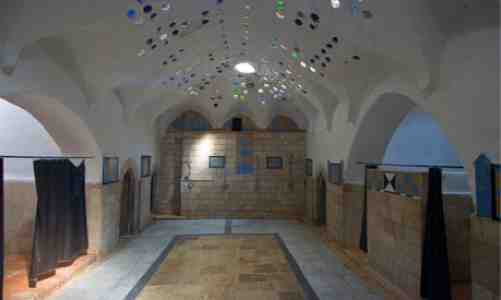
After all that walking and cycling, some serious relaxation might be in order. Nablus is home to two Ottoman hammams, which offer the traditional mixture of hot steam, cold water, locally made olive oil soap and bruisingly thorough massages. The 17th-century Hamman ash-Shifa is the best known; the staff are welcoming but if going it alone seems a little intimidating, some local volunteer organisations and hotels offer organised trips which, as well as the Turkish bath experience, include tea, sweets and shisha in the bath’s luxurious, cushion-lined outer room. The ash-Shifa also occasionally hosts Arabic music concerts and even book readings during the PalFest literature festival.
• Hammam Ash-Shifa (+972 9238 1176) is open 8am–midnight Mon, Wed-Sat, 5pm–midnight Tue, Sun for men, 8am-5pm Tue, Sun for women. Hammam Al-Hana (also known as Hammam al-Sammara or Samaritan Baths, +972 9238 5185) is open 6am–11pm Wed-Mon, 6am–8am, 5pm-11pm Tue for men, 8am-5pm Tue for women
Taybeh Oktoberfest

The picturesque hilltop village of Taybeh is home to perhaps the world’s most unlikely Oktoberfest. Every autumn, the Taybeh Brewery – run by a local family who learned their brewing skills in Germany – hosts a bustling festival. Oompa bands and lederhosen are thin on the ground, replaced by the likes of Toot Ard (protest ska from the Golan Heights), political hip-hop groups from the refugee camps or troupes of traditional Palestinian dabka dancers. But the beer is excellent, and if the crowds are too much the ruins of the 5th century church of St George are close by, with spectacular views across the river into Jordan.
• Reach Taybeh by bus or shared taxi from central Ramallah. For information on next year’s Oktoberfest and other visits to Taybeh, see taybehbeer.com
Hisham’s Palace, Jericho

The ancient, sleepy desert city of Jericho has a very different vibe from much of the rest of the West Bank. Summertime visitors will find that the residents turn semi-nocturnal to escape the heat, so at night the broad, flat roads fill up with silent cyclists. The “garden restaurants” along Ein As-Sultan Street, confined to indoor tables during the winter, spread out under the jasmine and bougainvillea for late, leisurely Arabic barbecues. Qasr Hisham – Hisham’s Palace – is one of Jericho’s most spectacular sights; intricate carved stonework gives an impression of the palace’s glory before it was destroyed by an earthquake, and the famous Tree of Life mosaic shows off the skill of the 8th century Umayyad craftsmen. Plans for a new protective structure, to be built in 2013, mean that the palace’s dramatic “carpet mosaics” may also go on permanent display, instead of having their sand coverings removed only on rare occasions.
• Qasr Hisham, (+972 2232 2522) is open 8am-5pm
Hebron’s souk
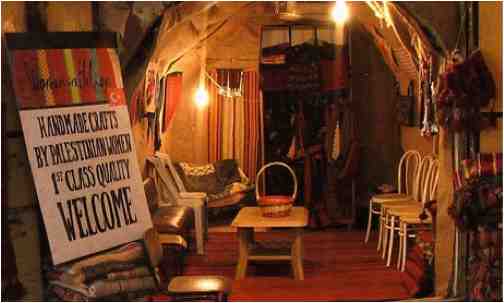
Just inside the main entrance to Hebron’s ancient souk is a small, cramped shop, stuffed with beautifully-embroidered materials and with chequered scarves from the West Bank’s only remaining keffiyeh factory, based just up the road. This is the HQ for Women in Hebron, an indomitable little co-operative that is one of the few surviving shops in the souk. Many have closed, shut by Israeli military order to protect the settlers who have occupied parts of the city, or because the settler threat makes business unviable. But with support from the nearby Hebron Rehabilitation Committee and small groups of travellers, a few survivors from what was once the main economic centre for the southern West Bank remain. On the benches across from the shop, you can sit with a falafel sandwich (done in oily, salty, delicious Hebron style with fried potatoes and aubergine) and drink tea with some of these remarkable women.
• Women in Hebron, womeninhebron.com
Akka

The new Bradt guide also covers areas of Israel that are home to large numbers of Palestinians and where their culture survives. Not to be missed is the old city of Akka (also spelled Acre), a small port on the Mediterranean which is one of the oldest inhabited sites in the world, was the capital of a Crusader kingdom, and whose fortifications put paid to Napoleon’s Middle Eastern ambitions. It’s a popular day trip with tourists to Israel, but it’s worth staying to explore its Arabic heart, away from the “official” tourist complex near the main gate in the city walls. The sleepy port is home to the famous Abu Christo fish restaurant, which serves the fresh catch from the adjacent port. Just yards away are several of the city’s imposing khans, huge caravanserais whose rows of stone arches housed Silk Road trains for whom this was the end of the journey. They are mostly half-derelict, and visitors are free to wander round; local fashion photographers looking for scenic settings and gangs of small boys playing football blithely ignore the warning signs under the crumbling walls.
• From Jerusalem, the quickest route to Akka is by shared taxi and train via Tel Aviv, taking 2.5-3 hours if the connections are good. Abu Christo restaurant (+972 4991 0065, abu-christo.co.il) is located at the start of the sea wall by the port, mains £5.50-£13
Sarah Irving is the author of the new Bradt guide to Palestine (£15.99, bradtguides.com)

